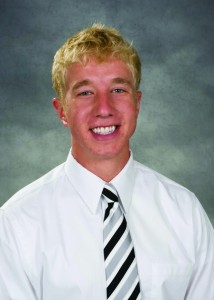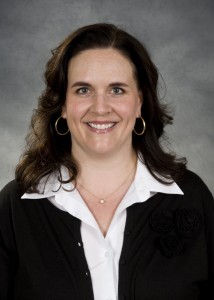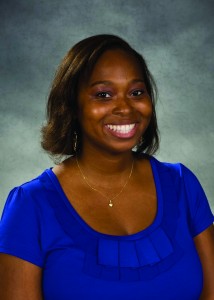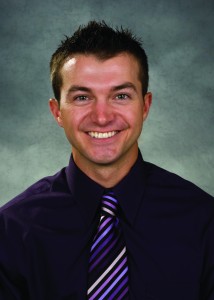The Wright State University Boonshoft School of Medicine held its annual graduation ceremony May 24, at the Schuster Performing Arts Center. The graduating class included 106 medical students.
Each student’s journey into medical school is unique. Here are just a few.
From the farm to medical school
Jeff Otte is one of seven children, who grew up on a pig and dairy farm in Maria Stein, Ohio. The fifth child of a nurse and a farmer, Otte wrestled with whether to be a farmer or become a doctor. His curiosity in the sciences pushed him to pursue a career in medicine.
“I enjoyed human anatomy, biology and later medicine. I wanted to use my skills to help the greatest number of people,” said Otte, who will begin a five-year residency in orthopaedic surgery at Mount Carmel Health System in Columbus, Ohio. “There is no other specialty in which you can help someone through the use of hammers, drills and chisels with successful patient outcomes. You can drastically improve the quality of someone’s life through nonsurgical and surgical measures.”
Otte credits his supportive family with his success. “My family is my biggest support and my biggest asset,” said Otte, who has received numerous honors and awards and has been a student leader. “I am very blessed.”
He and his siblings worked on the farm growing up. They showed pigs at the county fair. Otte remembers taking blood from wiggling, squirming pigs for the county fair drug test. At the March 15 Match Day, the day medical students nationwide learn where they are heading as medical doctors to receive advanced clinical training in a residency program, 16 family members and his girlfriend surprised him to show their support.
“My parents really pushed us to work hard at everything we did, whether it was school, sports or work,” said Otte, whose great-great grandfather immigrated to the United States in the 1870s and established the family farm in Maria Stein. His parents’ farm has been in the family for more than 80 years. Otte and two of his brothers grew up in the same bedroom that his father shared with his brothers. Aunts, uncles and cousins live within close proximity to their farm. The Otte family has dubbed the area “Otteville.”
Otte wants to return to Maria Stein after his residency and a fellowship to open an orthopaedic practice. “When I’m all done with my training, I’d like to move back to Maria Stein to Otteville,” he said. “It’s a rural area, and they need orthopaedic surgeons.”
From motherhood to medical school
As a child, Kathleen “Kit” Oxner, 41, a nontraditional medical student, read her older sister’s nursing textbooks and magazines. She wanted to become a physician, but a challenging high school chemistry class thwarted her dream.
After high school, she married her husband, Steve, and had two children, Alex and Megan. She was working and taking college courses. But Alex was diagnosed with juvenile diabetes at 2-1/2 years old. She dropped her classes to care for Alex, who is now a psychology major at Wright State.
As her children got older, she began taking college classes again at Wright State. Hesitant to enroll in a chemistry course because of her high school experience, she overcame her fear and excelled in the course. Her professor, David Dolson, Ph.D., associate professor and assistant chair of chemistry, encouraged her to become a premed major. Her husband, who graduated from Wright State in 1993, also encouraged her.
“My children were teens and essentially self-sufficient when I started medical school,” said Oxner, who is from Springfield, Ohio, and will graduate the same weekend that her daughter graduates from Shawnee High School. “Having a child with a chronic illness and an aging mother and mother-in-law has increased my exposure to the medical community from the patient side. It also influences how I relate to my patients.”
After her three-year residency program in internal medicine at Kettering Medical Center, she would like to return to her hometown of Springfield and work with aging adults. In her clinical rotations, she has seen many older adults who have other diseases in addition to an initial diagnosis. For example, some adults with diabetes may also have high blood pressure, heart disease and kidney failure.
“When patients don’t go to the doctor on a regular basis, maintaining their health can be difficult. Some people weren’t raised to go to the doctor. Others can’t afford it,” said Oxner, who also was vice president of the WSU chapter of the American Medical Women’s Association (AMWA) during her second year. “Springfield has an aging population and needs more physicians who can provide basic primary care. I am looking forward to doing meaningful work.”
From the inner city to medical school
As a child, Daisy Conduah realized that most people in her Harlem neighborhood did not have medical care. Many of her neighbors were immigrants or didn’t have jobs that provided health insurance. She was fortunate. Her mother, who works as a hotel housekeeper at a Manhattan hotel, had health insurance.
“I would ultimately like to go back to Harlem to serve people who need health care but can’t access it,” said Conduah, who spent hours as a child and teen reading medical books in the public library. “I also would like to mentor students from backgrounds similar to mine. I want them to know that they can become doctors. It is possible.”
Before she returns to Harlem, Conduah will spend six years in a U.S. Army residency program. An Army Health Professions Scholarship helped Conduah pay for medical school. “I also joined the Army because I wanted to serve the people who have put their lives on the line for our country,” said Conduah, who will be commissioned a captain on the morning of May 24. “It’s a great honor to serve these soldiers.”
She is looking forward to her general surgery residency at the NCC-Walter Reed National Military Medical Center. Walter Reed is known for its research and innovation. She wants to do a fellowship in surgical oncology.
“The operating room is an exciting place to be,” said Conduah, who was an active member of the WSU chapter of the Student National Medical Association and the Boonshoft International Health Program. “Surgery is a blending of medical and surgical intervention, which can help to alleviate symptoms or prolong someone’s life.”
She marvels at how the body’s organs are made and fit together. “It is amazing to open up the human body, fix things and put it back together,” said Conduah, who credits her mother with instilling a love for people. “I look forward to the challenges that lie ahead. I know surgery will be a rewarding field.”
All in the family
Ryan Hamilton will be the second of three siblings from Beavercreek, Ohio, to earn their medical degrees from Wright State University.
His older sister, Laura Hamilton, graduated in 2009 and is starting a pediatric emergency medicine fellowship at Nationwide Children’s Hospital in Columbus. His younger sister, Sarah, finished her second year of medical school and will graduate in 2015. Laura’s husband, Tim Rust, also is a 2009 graduate of the medical school.
Having an older sister in the same medical school had its benefits. She gave him advice and answered his questions. “Now I am the one giving advice to my younger sister,” he said admitting that there is some friendly, joking competition.
Hamilton credits his parents with instilling their work ethic in him and his sisters. His father, Steve Hamilton, D.D.S., is a dentist in Fairborn, and his mother, Linda, manages the dental office. “From a really young age, our parents demanded our best in school,” said Hamilton, who will begin a five-year residency in orthopaedic surgery at the University of Toledo. “Everything else came second to that.”
Hamilton also credits Carroll High School in Dayton with providing a great science foundation “The class in high school paved the way,” said Hamilton, who also earned both an undergraduate degree in biology and a master’s degree in anatomy from Wright State. “It was a hard class but it prepared us for college and medical school.”





 Milling around
Milling around  Wright State recognizes Nursing Professor Kim Ringo for advancing international student success
Wright State recognizes Nursing Professor Kim Ringo for advancing international student success  Wright State honors graduating students for distinguished doctoral dissertations
Wright State honors graduating students for distinguished doctoral dissertations  Top 10 Newsroom videos of 2025
Top 10 Newsroom videos of 2025  Museum-quality replica of historic Hawthorn Hill donated to Wright State
Museum-quality replica of historic Hawthorn Hill donated to Wright State 